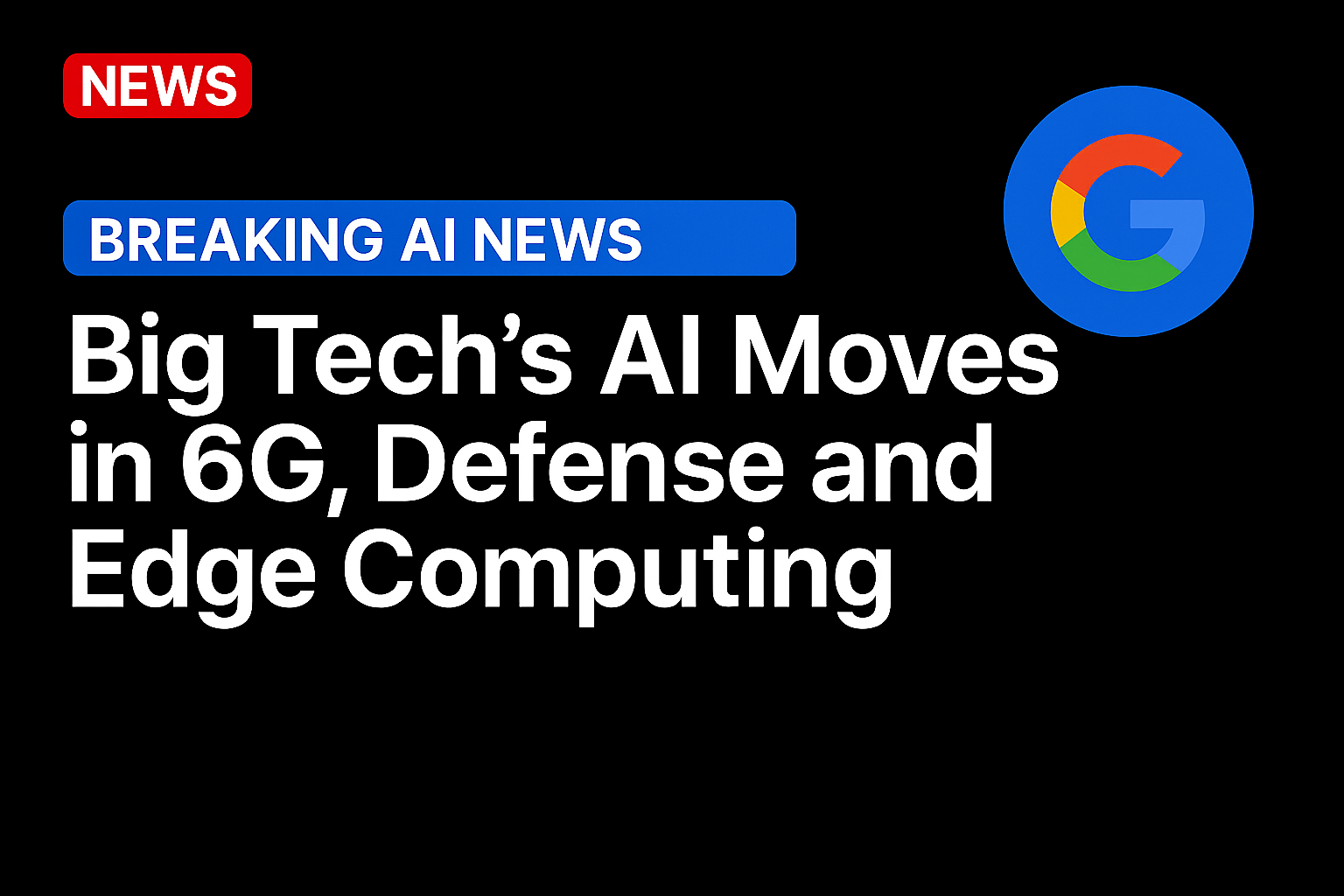
Beyond headline-grabbing model launches, this week’s updates show AI moving into infrastructure and operations from IBM’s defense-ready models to Cisco’s edge platform and Nvidia’s work on AI-driven 6G connectivity.
Nvidia Debuts 6G Wireless Stack
At its annual GTC conference, Nvidia introduced the United States’ first AI-native 6G wireless stack, a new kind of software and chip platform that helps mobile networks manage themselves. Created with partners including Nokia, Cisco, Booz Allen Hamilton, MITRE and ODC, the system runs on Nvidia’s AI Aerial technology and lets antennas and cell towers use machine learning to predict congestion, balance data loads and automatically reroute traffic.
The company will open-source parts of Aerial, allowing telecoms and universities to experiment with these self-learning networks, and is investing $1 billion in Nokia to co-develop what it calls “AI-RAN”, radio access networks that use AI to fine-tune performance in real time.
The U.S. Department of Energy (DOE) also selected Nvidia and Oracle to build two massive supercomputers, Solstice and Equinox, at Argonne National Laboratory. Each will contain more than 100,000 of Nvidia’s new Blackwell GPUs, specialized chips that accelerate operations used in AI training and deliver about 2,200 exaflops of performance. An exaflop equals one quintillion calculations per second. The systems will link Argonne’s on-premises hardware with Oracle Cloud so researchers can shift workloads between the two, training frontier-scale models while running other simulations in parallel.
Alongside that effort, the DOE announced a collaboration with AMD, Hewlett Packard Enterprise and Oak Ridge National Laboratory to build two additional exascale systems, Lux and Discovery, using AMD’s new MI355X accelerators.
Google Bets on India’s Scale
Google announced a partnership with Reliance Industries’ Jio to provide its Gemini AI assistant free for 18 months to all Jio 5G subscribers. Normally a paid plan, Gemini will now reach nearly 480 million users, instantly making it the largest AI rollout in any single market. By embedding Gemini into Jio’s apps for chat, payments and shopping, Google gains direct access to India’s vast language and behavior data, a critical edge as it trains AI systems to understand multilingual, mobile-first populations.
India has become a battleground for AI distribution. Telecom provider Airtel recently announced partnership with Perplexity AI, while domestic startups like Yellow.ai and Sarvam AI are developing local assistants.
IBM and HPE Advance Secure, Sovereign AI Systems
IBM introduced a defense-focused AI model with Janes Information Services for mission planning and decision support in secure, offline networks. Operating on IBM’s watsonx.ai platform, the system is designed for air-gapped environments networks physically isolated from the internet allowing militaries to use AI without risking sensitive data.
At the same time, Hewlett Packard Enterprise expanded its AI Factory program with sovereign-AI architectures built on Nvidia hardware. These systems let governments and financial institutions train and deploy large models inside their own facilities, ensuring compliance and traceability while maintaining high performance.
Cisco Pushes AI to the Edge
Cisco launched its Unified Edge platform, a self-contained system that combines computing, networking and security to run AI models directly where data is produced in factories, hospitals and retail environments. Because these tasks create far more network traffic than traditional automation, local processing reduces delay and bandwidth costs while improving privacy. For example, in a factory, an agent could detect an equipment anomaly, reroute tasks, and alert maintenance teams, all without waiting for cloud input. In a hospital, edge-based AI could analyze imaging data locally, reducing the time to diagnosis.
Cisco said such workloads can generate up to 25 times more network traffic than a typical chatbot or automation script, which makes running them at the edge essential for speed, efficiency and privacy. The system uses modular CPU and GPU configurations and can be managed through Cisco Intersight, its centralized IT control interface.
Source: https://www.pymnts.com/




